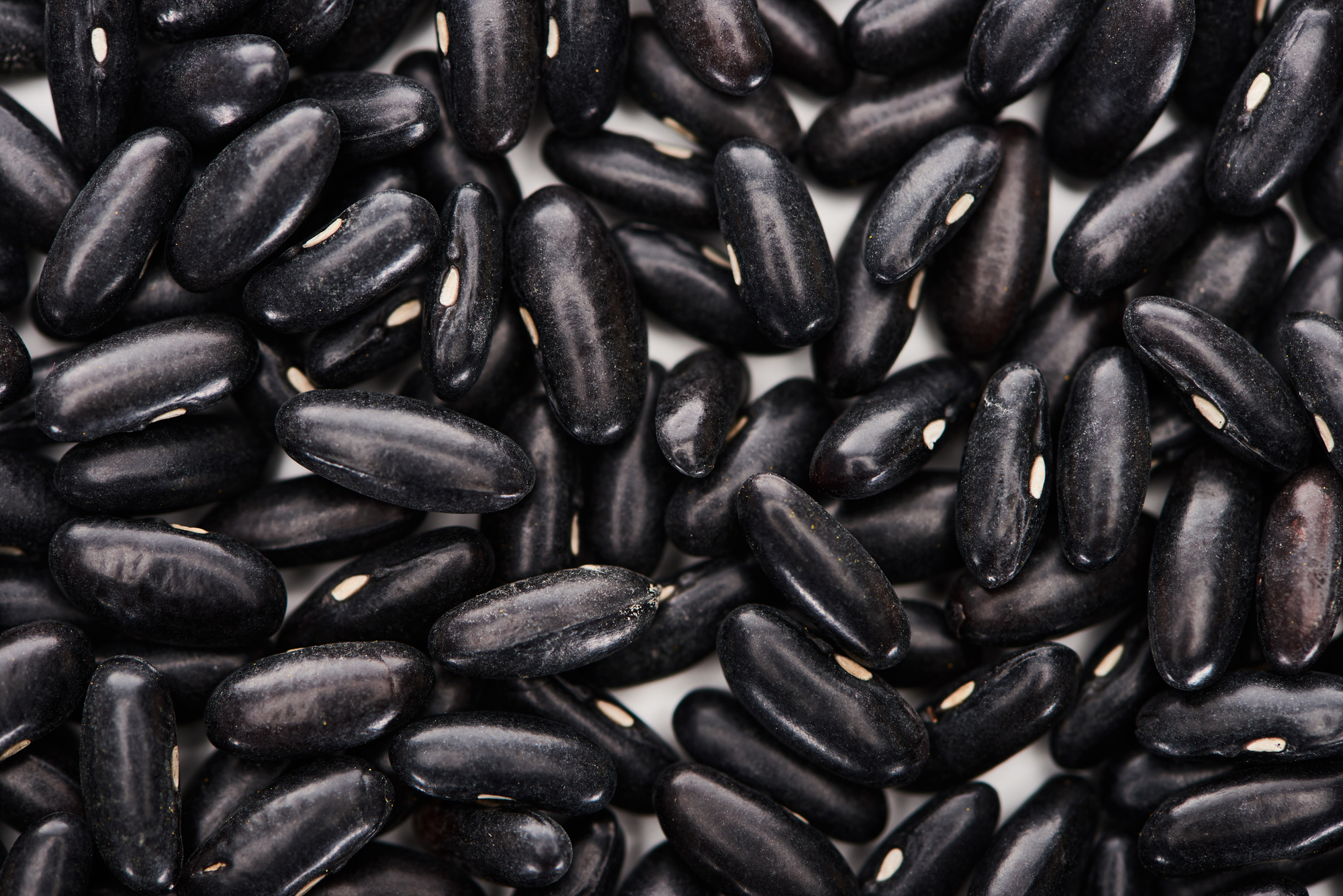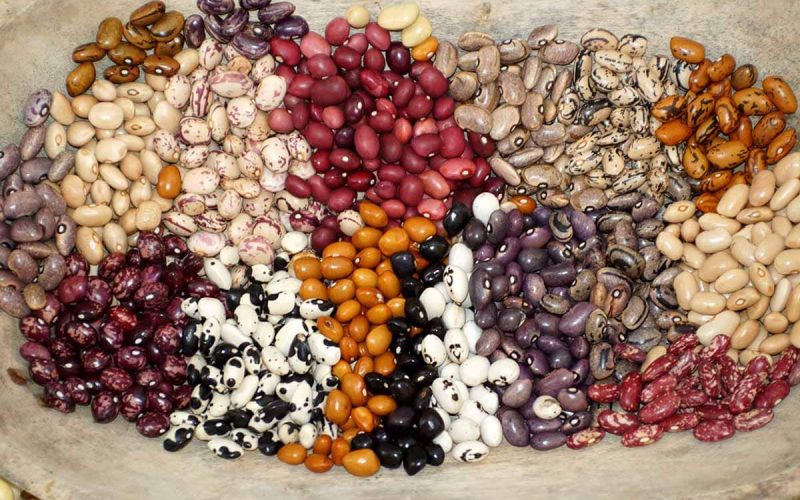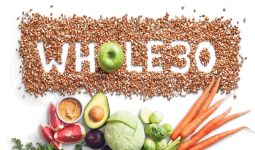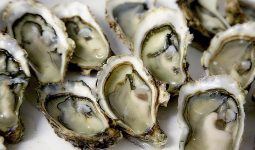Do you know the different types of beans you consume every day? Do you know which are excellent for animals and safe for people? Did you know that you can grow several types of beans in the comfort of your own home?
From black Beans, Black-eyed beans, Cannellini beans, and many more, this article will put you through different types of beans.
Beans are legumes, peas, peanuts, lentils, and other foods.
They are the Fabaceae family’s flowering plants’ seeds. Pods with several beans inside of them are how beans generally grow.
They lower blood sugar and cholesterol levels because they are high in fiber and B vitamins.
They are an excellent alternative to meat because they are a source of protein. Not to mention, they are affordable.
They also come in a huge variety; to be precise, there are 400 different kinds of beans. Only that is known to be edible.
One of the best things about beans is that they can be prepared for a delectable dinner by even the most inexperienced cook.
With just a few basic cooking abilities, you can prepare various dishes with beans.
So, let’s dig in; here are some different bean types.
1. Black Beans

Black beans are a common ingredient in many Brazilian and Mexican cuisines. Also, they taste mild and have a velvety smooth texture.
Also, this type of bean has a lower glycemic index than many other beans’ high-carb foods, which helps to lessen the blood sugar surge following a meal.
Furthermore, add them to salads, soups, casseroles, or tacos for more protein. You can also use them in place of meat or even flour.
2. Black-Eyed Peas
The moniker “black-eyed peas” refers to the beige color and striking black patch on this Southern delicacy.
Their earthy flavor makes them go well with salty meals like ham and bacon.
According to folklore, black-eyed peas are a traditional New Year’s Day food in the South.
They are a great source of folate, a crucial nutrient for expectant mothers. For tender and plump beans, simmer them in chicken broth while adding a ham bone, if you have one.
For the ideal side dish, incorporate your preferred seasoning and some greens! Also, this is one of the different types of beans.
3. Great Northern Beans
Great Northern beans, one of the different beans, have a mild flavor and are white and medium in size. They maintain their shape well when stewed or added to soups.
They can go well with various dishes because they absorb the tastes of the food they are cooked with.
4. Cannellini Beans
Cannellini beans, or white kidney beans, are the largest white beans, making them meatier than Great Northern beans or navy beans.
Furthermore, they taste light and nutty yet are similar. They can also be tossed in salads and hold up well in soups and stews.
Perhaps you had them in minestrone (but red kidney-type beans are also common; more on those later). This is one of the different types of beans.
5. Chickpeas (Garbanzo Beans)
The two sizes of garbanzo beans, sometimes known as chickpeas, are Kabuli and Desi. Kabuli is more frequent in the Mediterranean region, and Desi is mainly grown in India. Given that hummus is produced from them, you are presumably already familiar with them.
Because of their rounded form and sturdy texture, they make excellent salad toppings. Since they have a nutty flavor, they are also great for nibbling.
Dry chickpeas should be mixed with olive oil, salt, and spices before going into the oven. Not only are they among the most versatile beans, but they are also a fantastic source of fiber and protein.
6. Kidney Beans
These beans are distinguished differently by their vivid crimson exterior and white interior. Also, they are the ideal complement to any chili recipe because of their mild flavor—fun fact: Blueberries and kidney beans contain nearly the same cancer-preventing antioxidants.
Additionally, they are a great source of iron, heart-healthy omega-3 fatty acids, and protein. When it comes to cooking kidney beans, there are countless options: add them to rice, curry, tacos, or mash them to make a creamy dip, to name a few.
7. Lima Beans
Despite their unfavorable image, lima beans are nonetheless one of the different types of beans and have many wonderful qualities.
They could be white, creamy white, green, or either. There are two types of beans: the larger Fordhook (also known as butter) beans and the sweeter baby lima beans.
They also have a delicate texture and a mild butter flavor that can become mushy if overcooked. Additionally, they make a great side dish or an excellent addition to any soup. They are nutrient-rich and contain more potassium than kidney beans.
8. Fava Beans
Fresh fava beans are typically found in the produce area or at farmer’s markets; they are both bitter and sweet. They can be braised, roasted, sautéed, stewed, added to soups, or tossed with pasta.
In salads, you can also consume them chilled. After taking them from the pods, always blanch them before continuing to cook them using your favorite manner.
9. Fayot (Flageolet) Beans
Small, delicate, creamy, and mildly flavored fayot beans are often called flageolet beans. They range in color from light green to ivory white. In French cooking, they are frequently used for salads, soups, and other savory side dishes.
10. Pinto Beans
Pinto beans are an orange-pink tint with rust-colored specks. Also, Pinto actually means “painted” in Spanish. They are also a fantastic source of fiber and protein.
Their velvety texture and earthy flavor make them perfect for refried beans, dips, stews, and other recipes. One of the various bean varieties is this one.
11. Red Beans
Red beans are petite, oval-shaped, and have the distinctive skin color of a ruby. They have a delicate texture and a moderate flavor that is earthy, slightly sweet, and nutty—frequently used in Creole, Cajun, Latin, and Caribbean cuisine. It works well in recipes like red beans, rice, soups, and chili.
12. Mug Beans
Mung beans, one of the different types of beans, are little green beans that cook up soft and mealy. They work nicely in stir-fries, casseroles, soups, and salads.
Mung beans are often soaked before cooking. They offer an extended variety of advantageous health effects.
For instance, they are nutrient-dense and high in protein (i.e., potassium, magnesium, folate, and vitamin B).
13. Adzuki Beans
Adzuki beans are among the most popular beans in East Asia and the Himalayas. Red adzuki beans are typically used and prepared for meals by people from these regions.
If you enjoy matcha, you may have tried the sweetened red adzuki beans that are frequently served alongside the well-known tea powder.
These beans come in black, white, gray, and speckled variants. It is well known that adzuki beans contain a variety of antioxidants. As a result, they are among the most significant foods that are high in antioxidants.
If you’re a fan of the matcha taste trend, consider making straightforward dishes with red adzuki beans cooked slowly and sweetened. You can also try the popular Japanese snack known as natto’s red adzuki version.
Adzuki beans are difficult to grow since they don’t grow well in unused gardens. If you’re determined to cultivate adzuki beans, you must start over.
It is preferable to grow them inside because they don’t germinate well in most climes. This is one of the different types of beans, though it has yet to be popular worldwide.
14. Coffee Beans
Coffee is one of the few different types of beans that can be ground and brewed for drinking. They originate from many Coffee plant species that are grown over the globe.
After being brewed for drinking, coffee beans take on a flavor unique to the coffee plant from which they were harvested.
The three well-known varieties of coffee beans produced and offered in grocery stores or specialty stores are Arabica, Robusta, and Liberica.
If you want to learn how to brew coffee beans at home, you’ll need a lot of patience. Your favorite beans can be roasted in a pan, oven, or grill.
The simplest ways to roast involve using a popcorn maker or a machine designed specifically for roasting coffee.
To see the outcomes you need to reach, you can also look at several online tutorials for making coffee at home.
Furthermore, Growing coffee beans is doable, but you must be ready for the challenges. You must first purchase fresh fruits from the Coffea plant because dried ones won’t function.
Fresher coffee beans germinate after 2.5 months, whereas dried or older beans need approximately 6 months.
Additionally, you must have access to artificial lighting because plants need a specific temperature when exposed to sunlight.
15. Soybeans
Of all the bean varieties on our list, soybeans are renowned for being used to create a variety of foods and drinks. Tofu, soy milk, and soy sauce are available in the neighborhood market or grocery store.
They are primarily grown in North and South America and Asia. It makes sense then that Asians and fans of Asian food consider soybeans a necessity.
Because soybeans are one of the best protein sources, most vegans and vegetarians eat them independently.
They substitute various types of tofu for meat to help balance one’s cholesterol levels. Soy sauce, another adored and well-known soybean product, gives practically any food a distinctively salty flavor.
The Citrus Soy Glaze and Tofu Stir Fry are two straightforward soy recipes you may attempt at home.
Furthermore, Soybean plants flourish in the summer or warm soil, like most bean varieties. Due to the little beans, they produce with each harvest.
It is preferable to grow them in large gardens or fields. They thrive in medium soil and buckwheat. This is one of the different types of beans.
16. Lentils
Lentils and other beans are closely linked because they are both legumes. Since lentils are a well-known source of potassium, fiber, and folic acid, most vegans and vegetarians who suffer from cardiac issues include them in their diet.
When consumed frequently, these nutrients work harmoniously to reduce or eliminate the chance of developing heart disease. Additionally, lentils are well known for reducing neural tube abnormalities in fetuses.
Most lentil dishes are soups or stews because they are the easiest. However, some home cooks use lentils in other recipes, such as loaded potatoes, fritters, or salads.
Lentils, once consumed, provide more energy and keep you full until your next meal. This is one of the different types of beans.
17. Green Beans
The truth about green beans is one of our list’s most unexpected items for bean types. They are cultivars or fruits of various common bean varieties that are immature or raw.
One of the foods that are frequently provided at potlucks and cozy family dinners is green beans.
The vitamins A, C, calcium, and iron are also present in this variety of beans. Almost any recipe pairs well with cooked green beans of any variety.
The easiest preparation methods include steaming and throwing the beans in a salad or sautéing them in butter and garlic.
Then, pair them with steak or other cooked meat to make your supper healthy. Because weeds grow alongside the plants, green beans can only be grown outside.
Green beans must be cultivated outdoors since, unlike most beans, they cannot be grown indoors. Also, green beans do best in the warm soil of Texas, so if you reside there, try growing them in your backyard.
18. Navy Beans
The navy bean was named after the United States. Early in the 20th century, the Navy’s primary staple meal.
Soldiers who frequently ate the beans benefited from vitamins and minerals such as vitamin B1, manganese, magnesium, iron, and protein, which gave them energy and power.
These days, buying navy beans from your neighborhood shops is simple, and canned versions are widely available. When stewed or cooked gently, navy beans can fully develop their characteristics.
One simple recipe is the Navy Bean, Bacon, and Spinach Soup, prepared on the stovetop, in a pressure cooker, or in a slow cooker. Use canned navy beans to make a single serving of chili if you’re always on the go.
Furthermore, like most different types of beans, navy beans thrive in gardens with direct sunlight. To be ready for the sprouts, keep in mind to space each bean out by three feet.
After you have finished planting, you should be able to harvest the navy beans in between 85 and 100 days.
19. Cocoa Beans
Thanks to cocoa or cacao beans, you can have that steaming hot chocolate beverage in the winter. All the chocolate goods that we know and love today are made with the help of beans, which are a necessary component.
The cocoa plant initially came to light as a crop in ancient times when it was produced by the Aztecs, Mayans, and people from South America.
Today, chocolate is typically associated with cocoa beans. The word “chocolate,” a compound of two Nahuatl words that means “hot water,” gave rise to the bitter or sweet food.
Most people connect cocoa beans and chocolate with sweets and unhealthy meals. However, there are several methods to indulge in the full flavor of cacao without feeling guilty.
To make your guilt-free chocolate delicacies, feel free to buy raw cacao beans from specialty markets or shops.
Cacao nibs, cacao tea, and rich dark chocolate are among the most excellent and straightforward homemade cacao sweets and libations.
Furthermore, If you need more preparation for an intensely dedicated connection with your garden, we strongly advise against planting cacao beans in your backyard. This is one of the different types of beans.
To produce flavorful beans, high soil temperatures and rainfall are necessary for cocoa cultivation. Most gardens, unlike cocoa farms, lack the delicate care and attention that cocoa beans require.
As a result, cocoa beans flourish in tropical nations, where they yield the highest-quality chocolate.
20. Peanuts
One variety of beans included in the family of legumes is the peanut bean. In addition to being a well-known airline snack, peanuts are also used to make other goods like wheat and oil. We eat peanuts in a sandwich with fruit jam or jelly and butter.
Each serving contains various heart-healthy nutrients that help with memory retention, weight loss, and lowering the risk of heart disease.
Furthermore, roasted and cooked peanuts are frequently eaten with a few alcoholic beverages on the side.
Roasting nuts on your stovetop with sugar or honey is another easy way to serve them. You can also add the robust flavors of roasted peanuts to salads or well-known meals like Pad Thai.
Although they are commonly seen as a Southern crop, peanuts may be grown in any garden with full sun. You can plant them either way, husks or no husks.
However, since the seeds’ thin pink-brown coating prevents germination, it is advisable to leave it on. We advise planting peanuts in a sizable peat pot before winter if you reside in a northern region of the United States.
21. Peas
Peas are the bean most frequently served during American holidays, including Thanksgiving and Christmas.
Even though most kids detest them, peas are always served, especially at cozy family lunches and dinners. Peas are typically bright green but are not particularly healthy when cooked because of their starchy texture.
What to do with the second bag of frozen peas is one of the most frequent issues in American homes. If you also have extra pasta, try making a straightforward pasta with peas or sauté some leftover meat.
Additionally, you might season them and bake them with leftover beans, mushrooms, and potatoes.








